Episode #11: Autumn coming in fast
All the reds, yellows and oranges, plus some stubborn green figs.
The weekend of 19-20 October was one of two halves: blue sky sunny Saturday, grey Sunday with some heavy rain showers. Too wet to mow that last mow of the year I’m still hoping to get done, so activities were a bit mixed and not to plan. The grass is now very shaggy.
But this week I should first say a big thank you to the 80-odd of you who have signed up as subscribers, plus the other 20-30 of you who dip in and out on reading my posts each week. I am quietly thrilled that there are now over 100 of you out there, all along for the allotment ride. Thank you.
(There are a *lot* of photos here too, and they might not all fit on your email. Hitting the View Entire Message button at the end should sort this out, as will reading via the app or online versions of Substack.)
This week’s Plot Shot
The Autumn colours are coming in fast across the site as temperatures drop. There hasn’t been a frost yet, but leaves changing colour are telling us that it is getting closer.
Our blueberry bushes are having their first autumn with us, and they are changing colour in the order that they fruit, early ‘Orsorno’ the reddest, the others just starting to turn.
Plot work in progress
Plot work this week (between showers) was to clear down more of the fruit tree pruning pile from a few weeks ago. There’s a heap of branches waiting to be sawn and lopped down into wheelbarrows and taken to the dry hedge spot on the site.
As you can see, this doesn’t look promising. But once cleared, I have Big Plans for this bed in 2025. Now that the bed is open to light and air (and not overhung by the thuggish cherry plum) I’ll plant mixed asparagus crowns in the spring, and keep the beds free of weeds by interplanting strawberry runners. I’ve been told asparagus and strawberries like each others’ company as companion plants. Let’s see.
All the branches are headed to a hidden common part of the site where wood and other brown material which won’t rot down in a compost bin can gradually decompose. There’s a quiet space, surrounded by trees and high native hedges, where we heap this up. It makes a haven for wildlife (beetles, small birds, fungi) as the wood breaks down.
Elsewhere, I dug over one of our rotation beds and planted more overwintering broccoli ‘Burbank White Sprouting’. That’s now three beds of eight prepped for winter. Five to go.
Harvesting now
There’s suddenly not much to harvest from the plot now that summer crops are over, and brassicas to overwinter are going in. That must be my bad planning somehow. Maybe I missed something at sowing time - runner beans, beetroot or carrots..?
Only our old ‘Brown Turkey’ fig tree had something to offer this week.
The fig tree is stumpy, with grey gnarled branches splayed across the front corner of the plot. It is recovering slowly from the trauma of being moved in early 2022, and has been hard pruned every year since then to encourage strong new shoots to form. It is getting there, slowly.
The tree fruited well this summer, but the smaller second flush of figs won’t ripen now. The leaves, yellowing from the cold, are dropping fast, so I picked the last green hard figs. Two handfuls of fruit, oozing sticky white milk sap.
Making and eating
Back home, after an overnight soak in salt water, the green figs met honey.
I remembered that chef
shared a recipe for preserving figs in honey, Greek spoon sweets, so I looked it out here on Will’s lovely Substack ‘A Private Chef’. Will works this with mandarin as well as lemon zest, but I only had lemons. I don’t think Will would mind, somehow. He’s a ‘work with what you have’ kind of chef, totally tuned in to the seasons on the organic farm he cooks from.My small crop of green figs softened slowly, simmered for an hour in summer flower honey brought back from a weekend trip to Slovenia earlier this year. The honey and lemon smell almost had me reaching for slivers of fresh ginger and going full-on cold remedy for flavour, but I stuck to lemon and fennel seeds. I’ve since found another recipe which suggests stuffing each fig with a whole blanched almond, but I’d need much bigger figs than this year’s for that.
Last year there were enough figs for three jars and we gave two away to allotment friends as gifts for Christmas. This year there is only one small jar1, but then we’d had more fresh figs as summer fruit. Allotment swings and roundabouts in the plot tally for this week2.
E17 Local Heroes
The changeover of the seasons is happening in the greenhouse too. The dahlias, which never made it out to the raised beds for the summer, are winding down, and autumn-flowering chrysanthemums taking their place.
The chrysanthemum cuttings are my Local Heroes this week. They’ve had a horrible time, out in pots on the plot. Mea culpa. I kept their pots in a plastic crate at first, but the spring’s invasion of slugs and snails munched them horribly as they started to sprout. Slugs clearly like chrysanthemum shoots as fresh greens, and I’d given them a slide-by salad bar.
Now back in the greenhouse, they are spindly but starting to flower. Purples, reds, yellows and oranges - all the colours of autumn together. More photos of these to come as they bloom.
Community of Practice
After much discussion over mugs of tea, the allotment gang *may* have adopted a different approach to our growing practice for 2025. Instead of all of us sowing our own seeds independently, then swapping spare seedlings afterwards, we’re going to each try growing what we are good at, but growing enough for everyone to share. This is how I ended up sowing the first batch of thirty-two broad beans in root trainers on a rainy Sunday morning.
I love growing legumes (beans, peas, sweet peas, lupins, all classic allotment plants). What I hadn’t realised until Sunday was how different broad bean (fava, or faba) seeds mirror the colour of their plants’ flowers (climbing beans don’t). ‘Red Epicure’ is a red-flowered variety, ‘Super Aquadulce’ a white.
This might seem obvious, but as I’d not grown red-flowered broad beans before, it was striking. I got so excited that I’m going to plant a second root trainer full of different varieties next weekend. Sixty-four broad bean plants should be enough to keep the gang going, assuming most of them come up (I probably have space for eight plants, ten at a push). I love old botanical illustration plates too, so here’s one of a broad bean plant, Vicia faba.
What I’ve learnt (the hard way, from many mistakes) is not to plant the big flat-sided seeds out directly into soil at this time of year. They’ll either get too wet and rot, or be dug out and eaten by mice. Hopefully I’ll dodge each of these risks with the root trainers. They’ll grow slowly in the greenhouse over the winter, possibly get big enough to plant out before the end of the year. Then we’ve just got to swerve black aphids (blackfly) in the spring.
Even the foxes are preparing for winter. This is Leo, our very handsome boy, burying a piece of raw chicken for later. He wouldn’t stop and look up for a better photo.
Until next week, everyone keep digging. Winter is coming.
Ang
One small 250g jar of preserved figs. Brindisa’s posh pickled equivalent are £9.25 per 370g, or Tiptree’s hard to find green fig conserve £3.79 per 340g jar, so plumped for £6.00.
Total for this week, Episode #11, £6.00, total to date since Episode #5, £170.26. Seven weeks’ produce, based on current supermarket or local farmers’ market prices.

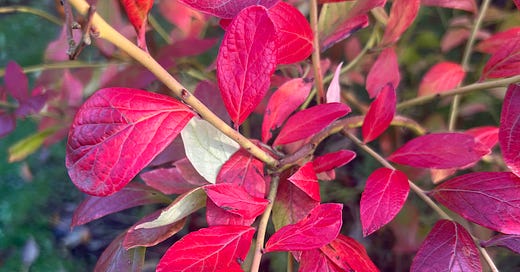



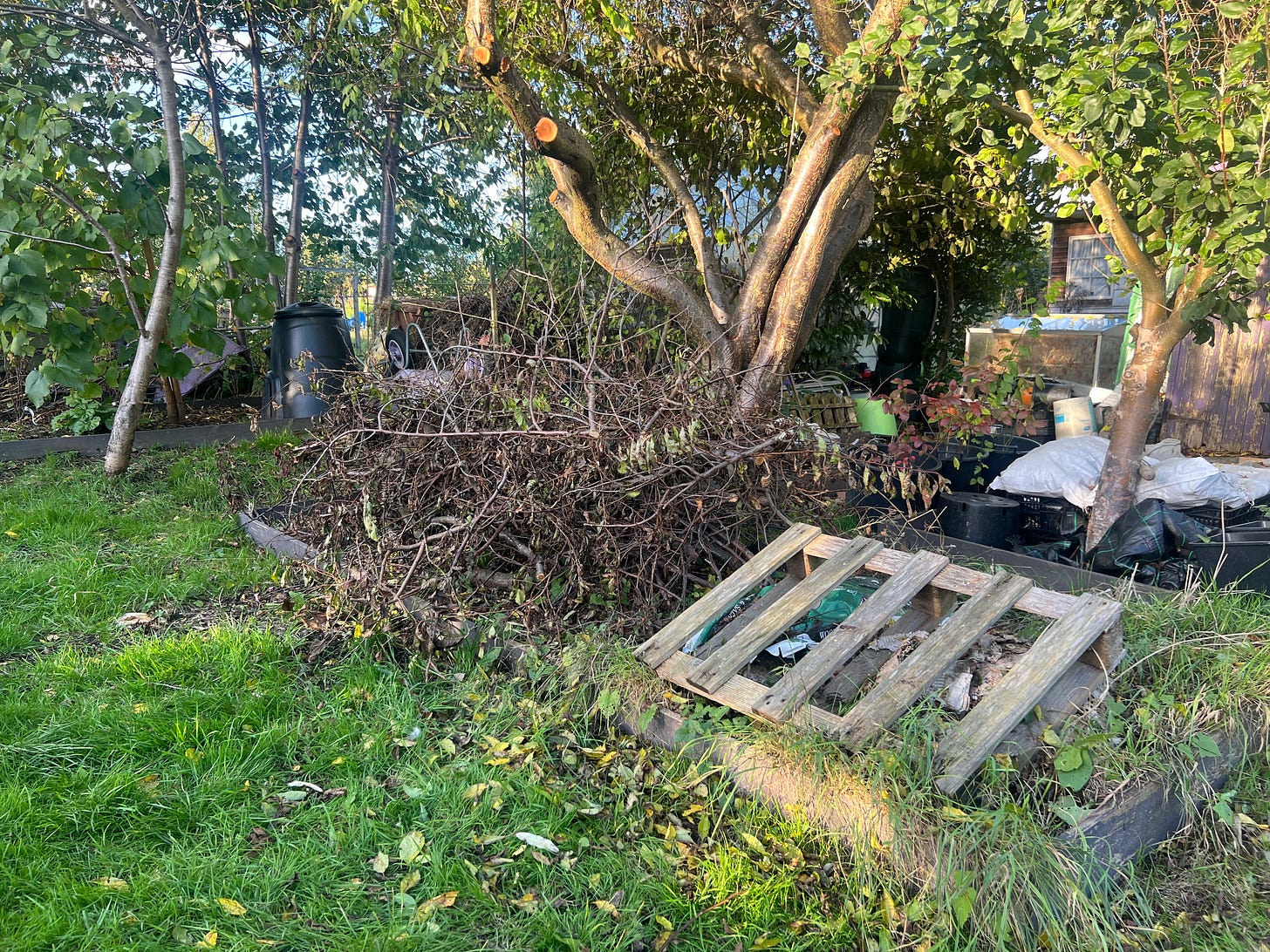
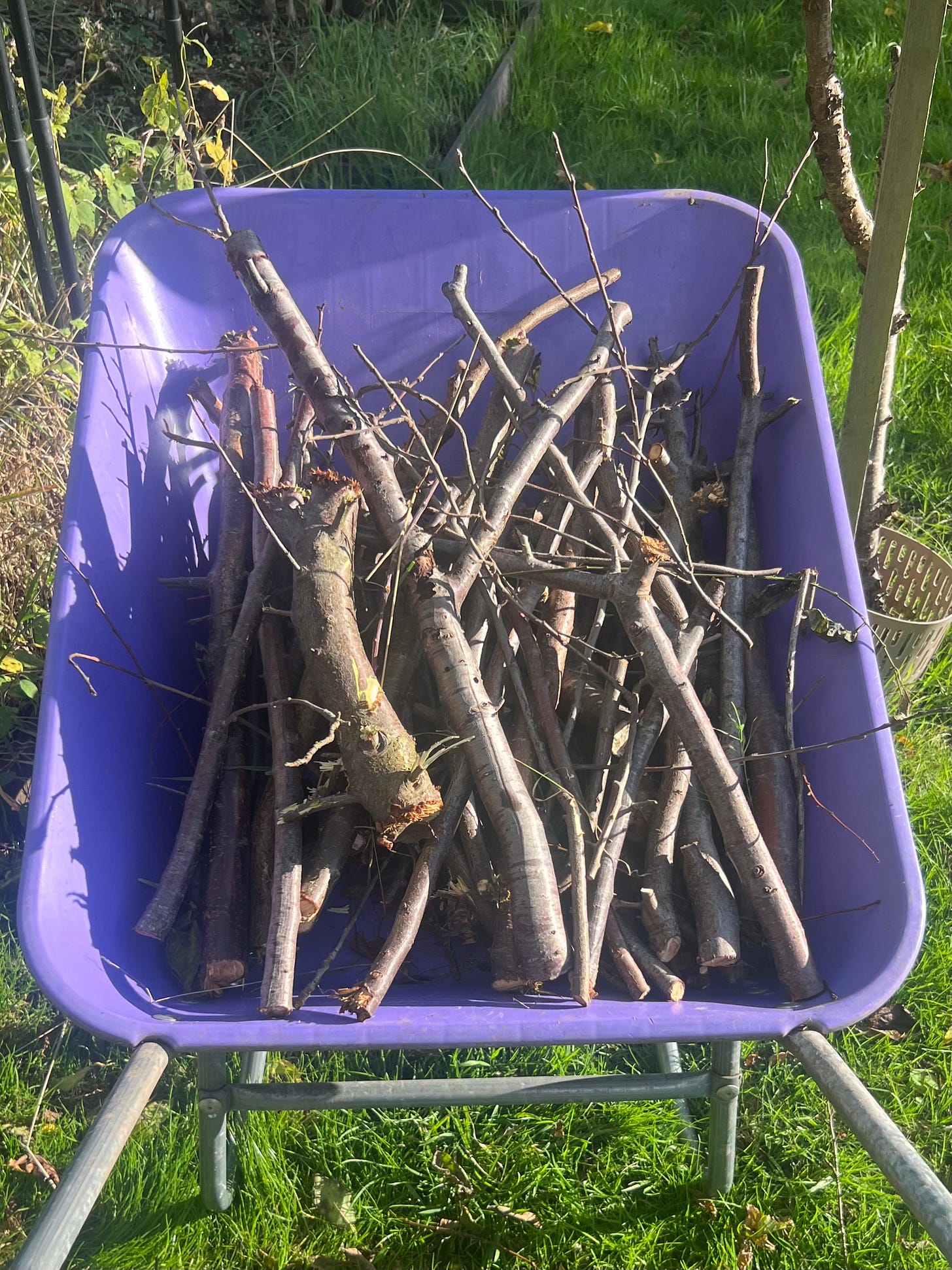
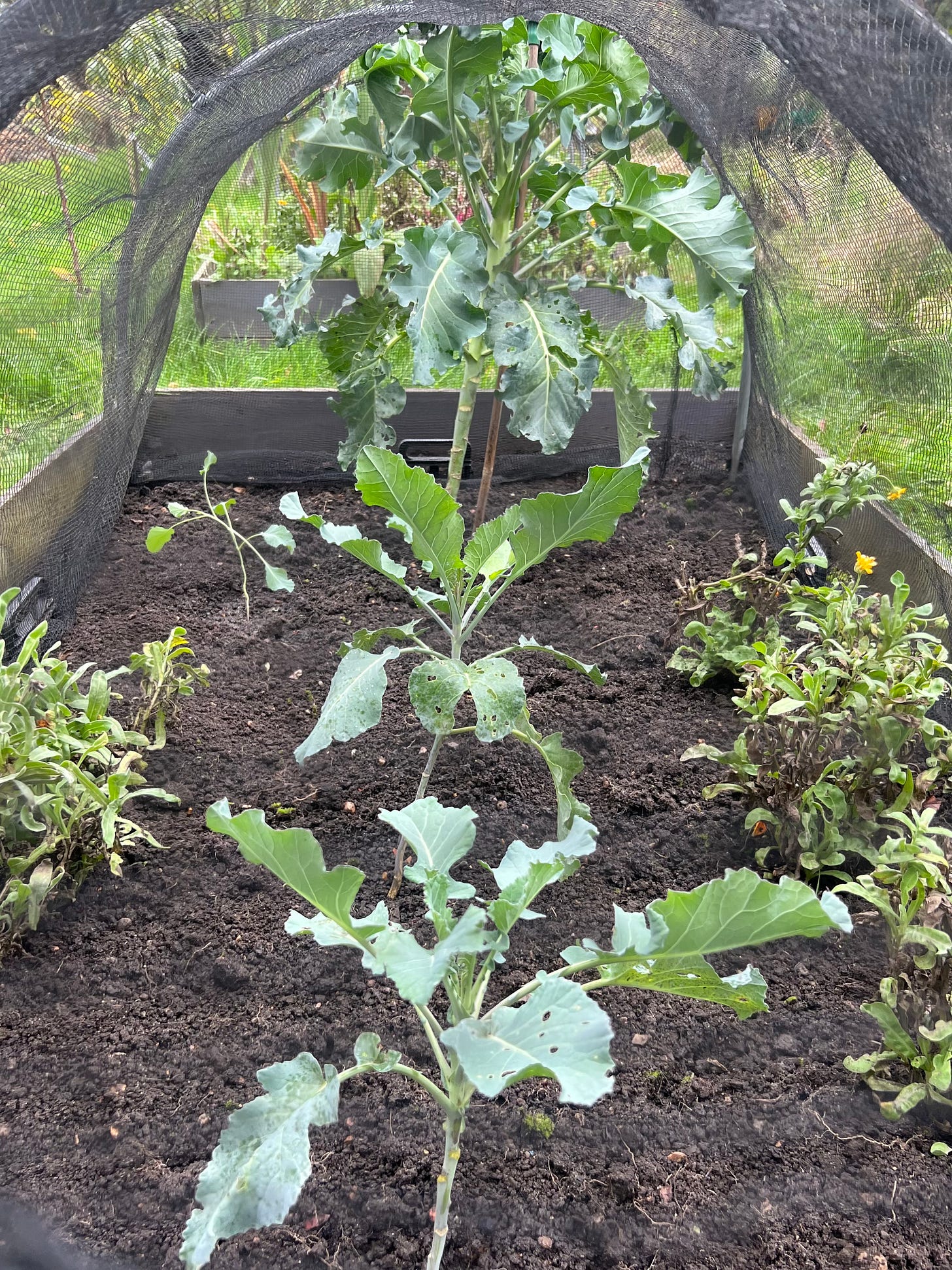
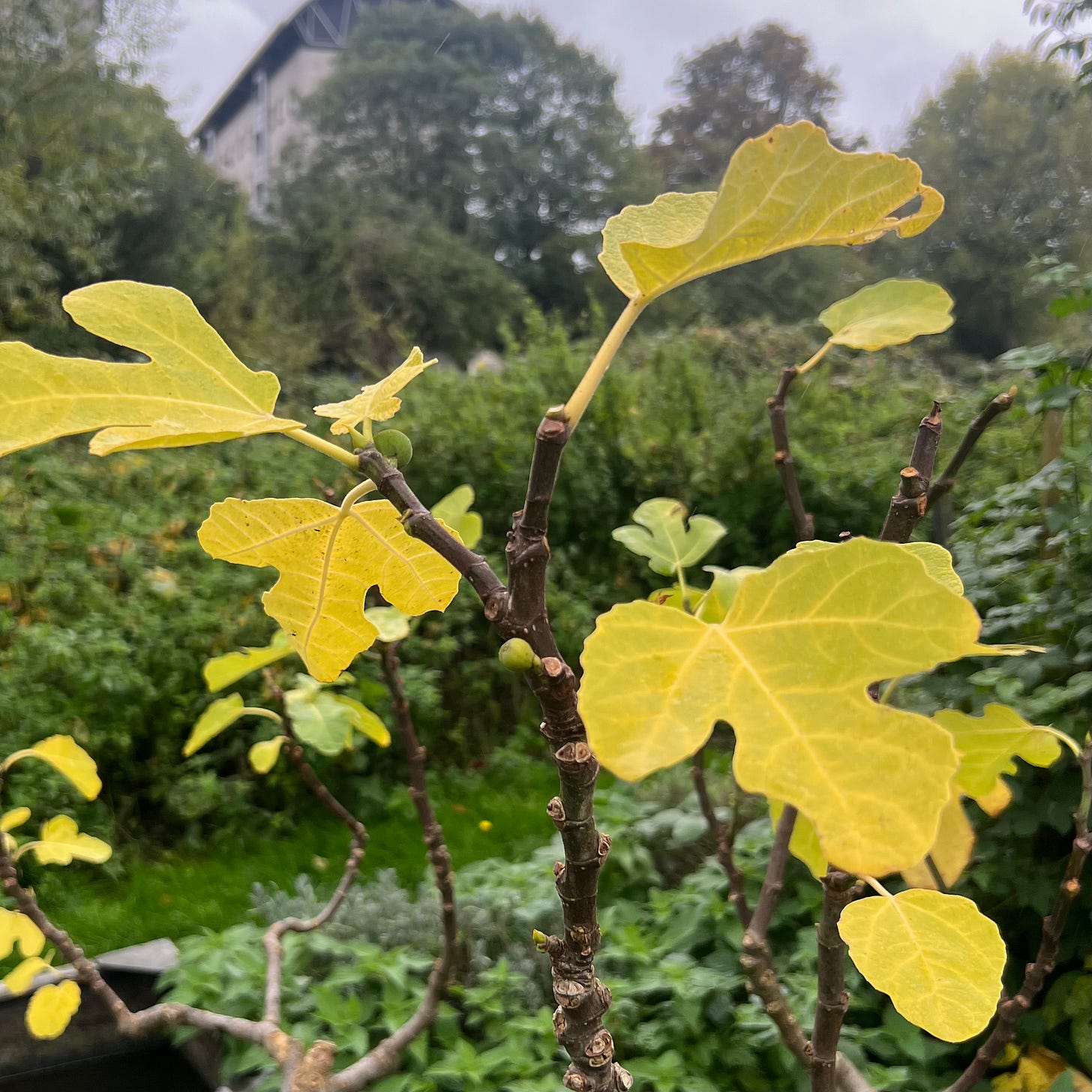
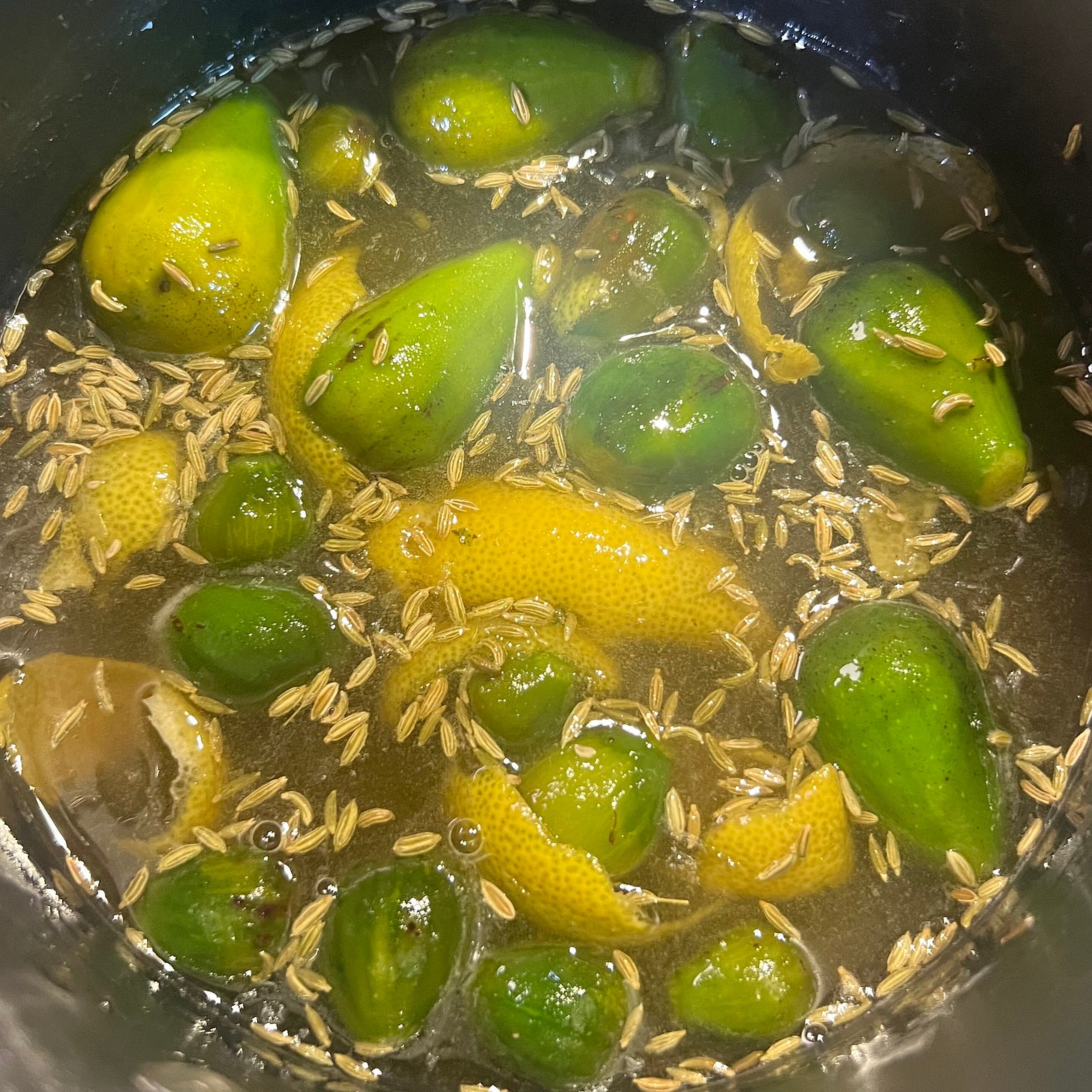
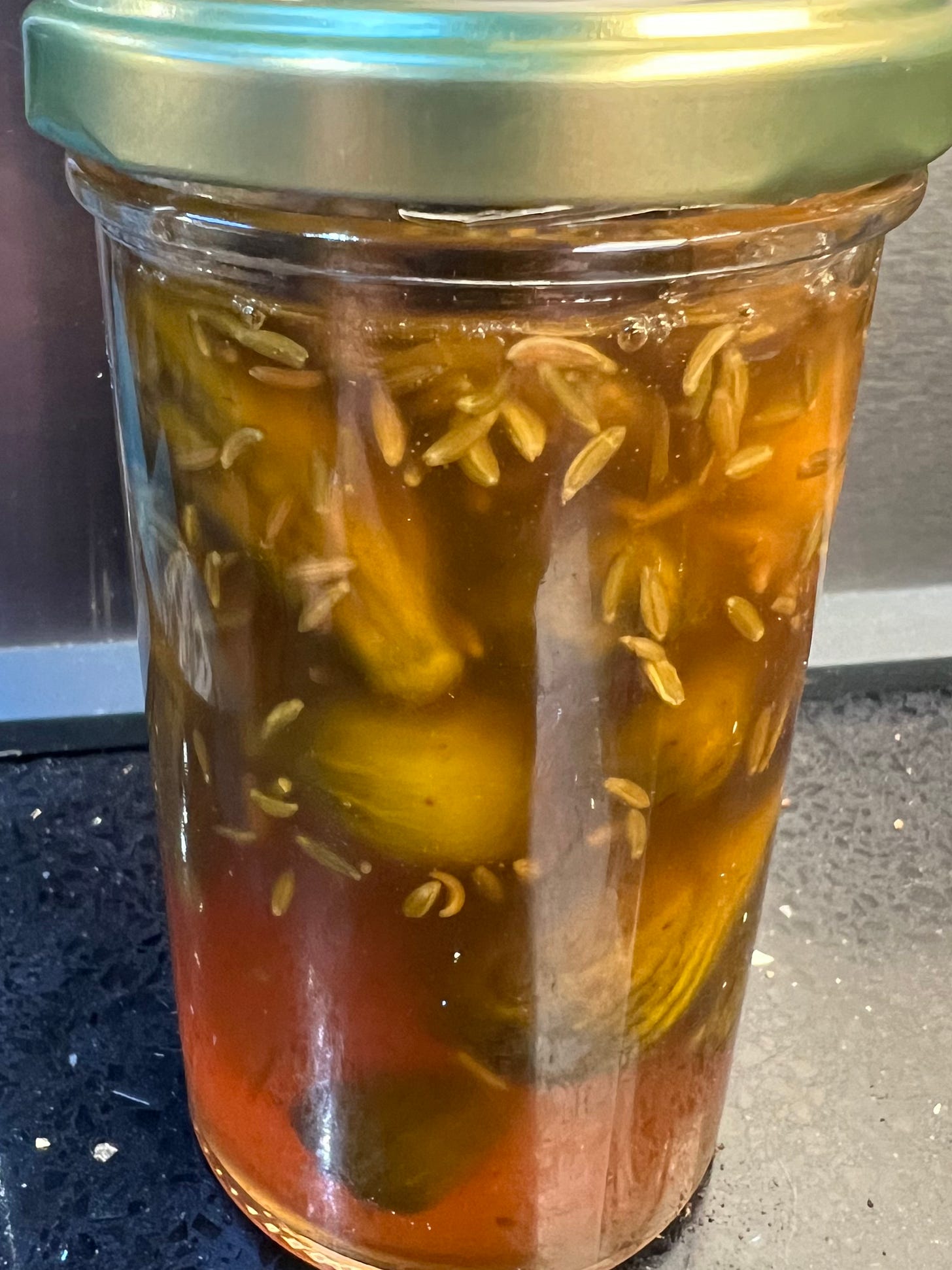

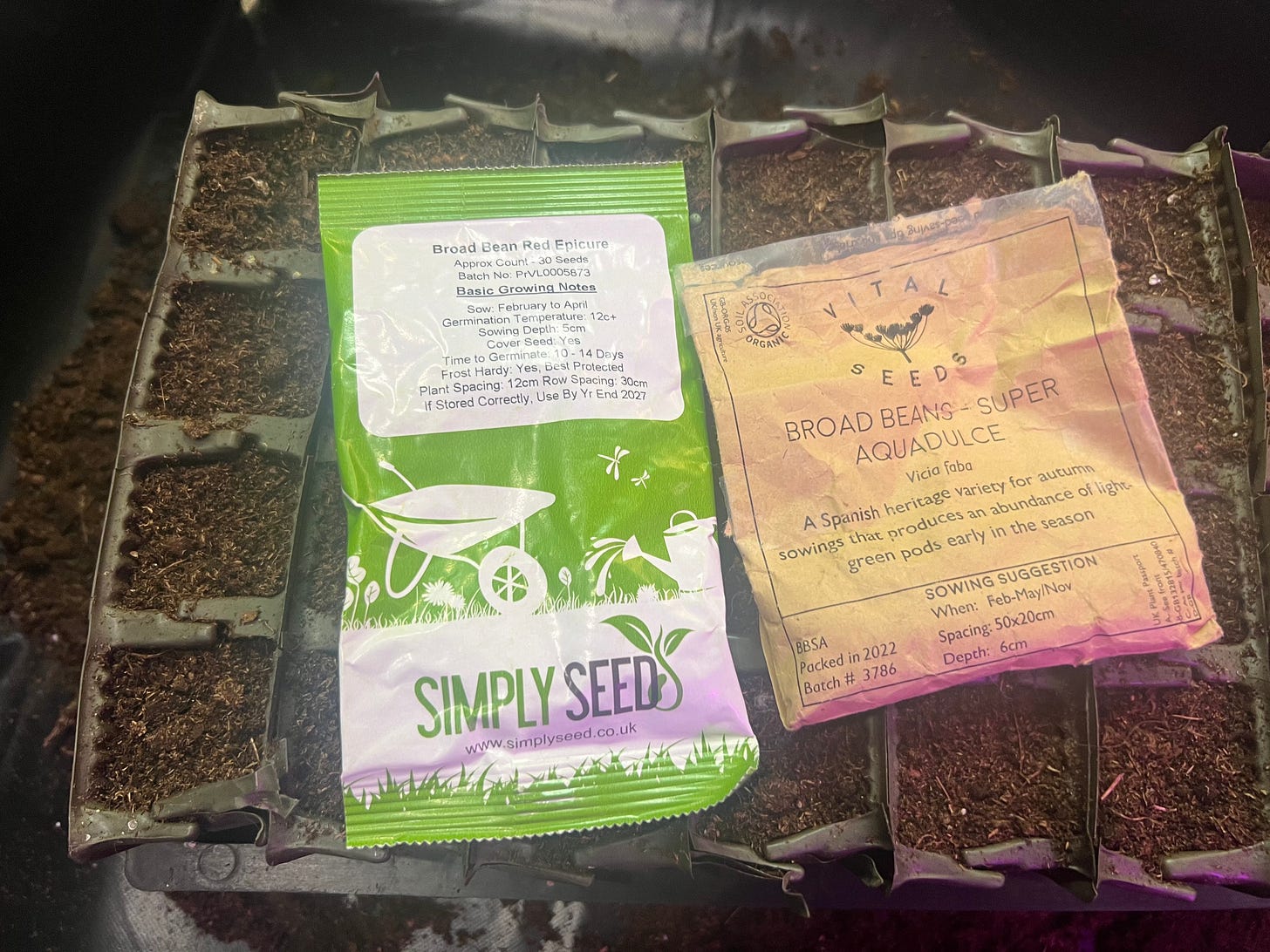
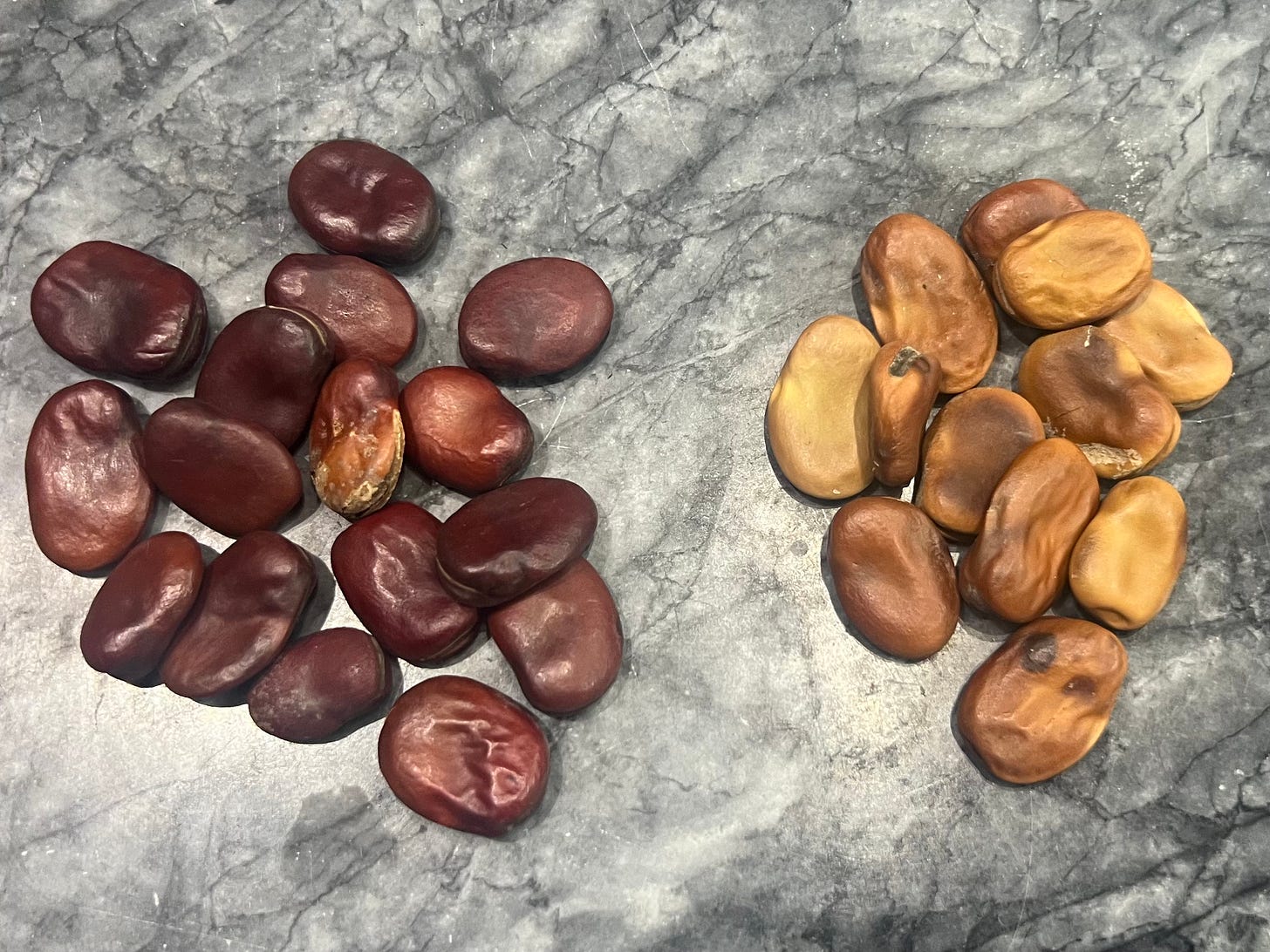
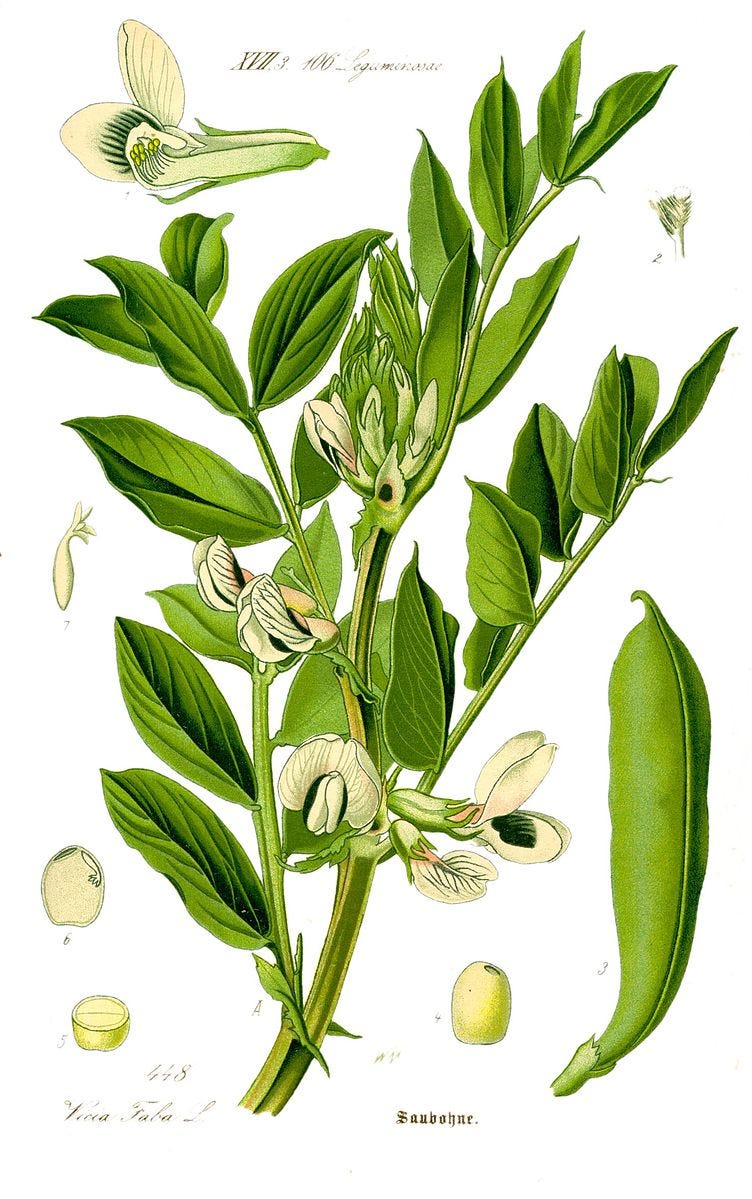
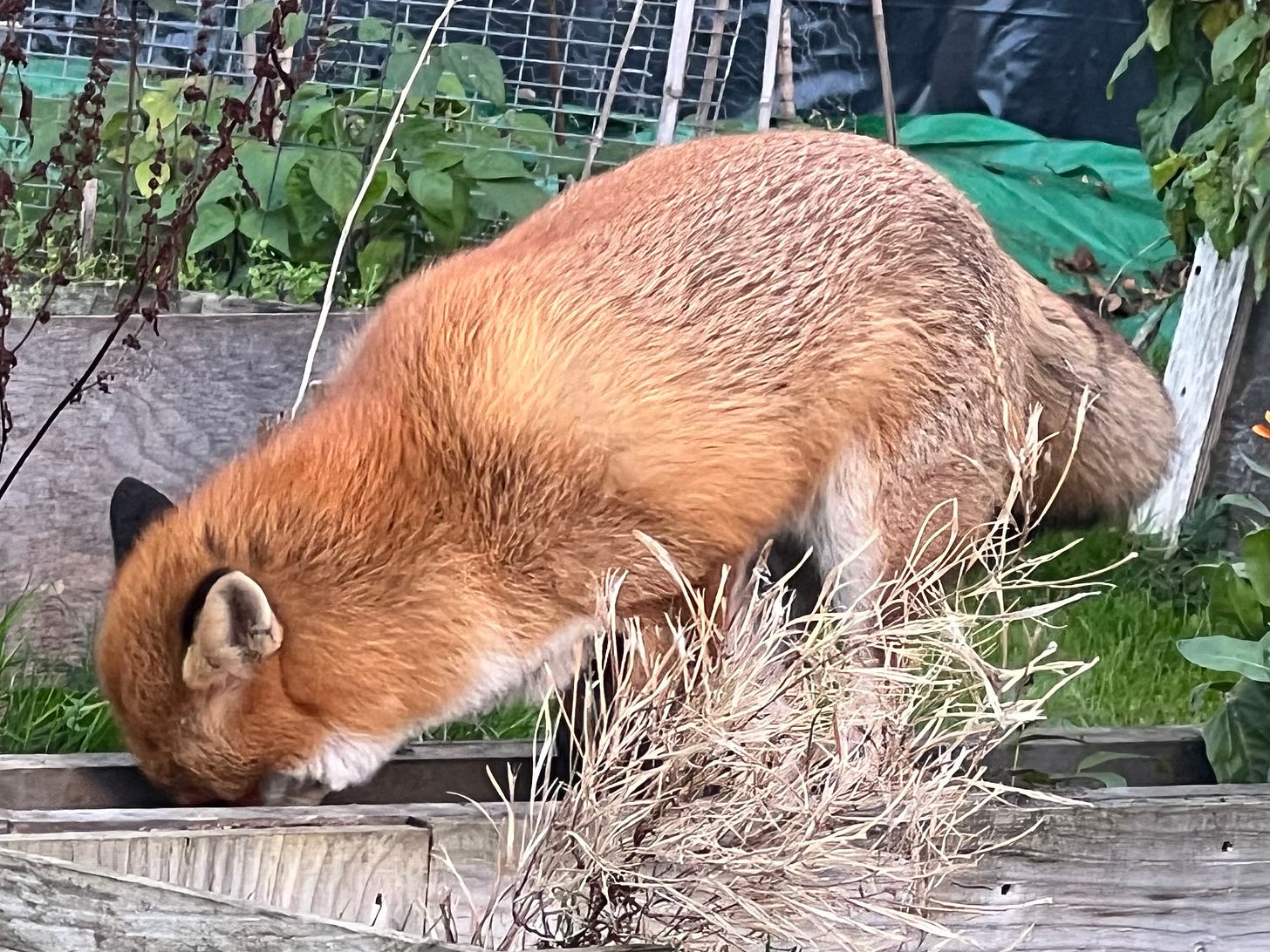
What did you add to the honeyed figs. It looks like you may have added fennel seeds or another type of seed?